Welcome to the Pine Barrens! Often referred to as the Pine Lands, this area of New Jersey is massive. Stretching across seven different counties, the Pine Barrens cover a total of 1.1 million acres. Tucked away in the northeastern section in Bayville, you’ll find Double Trouble State Park.

There’s quite a long history at Double Trouble dating all the way back to the 1700s. In the early years, the land was primarily a supplier of lumber products all over the East Coast. With numerous streams and cedar trees, the raw materials were readily available and there was plenty of water power to make this possible. By the mid-1800s, there were two sawmills in production.
Eventually, swampland was created after all of the trees were cut down. This environment, referred to as a bog, was perfect for growing cranberries. What I’ve learned is that acidic soil, layers of sand and peat and plenty of water and sunlight are the ideal conditions for cranberries. All of these can be found in a bog.
In the 1860s, cranberry production began and in the early 1900s, the Double Trouble Company was created. The Double Trouble Company became one of the largest cranberry growers in New Jersey. Eventually the Company wasn’t making enough money anymore and the land was sold to the state in 1964. Cranberry production at Double Trouble officially came to an end in 2010. The village still stands today and is part of the National Register of Historic Places.
Double Trouble Village
There are fourteen buildings still standing in this village to this day. These include the Schoolhouse, Burke House, Garage and Machine Shop, Cranberry Sorting and Packing House, General Store, Shower Room, Bunk House, Pickers’ Cottage, Jumper Building, Sawmill, Harvest Foreman’s House, Pickers’ Cottages and the Company Foreman’s House.
Schoolhouse
The oldest remaining building and was a one-room school. It was used until the end of the 1914-15 school year. This is located right next to the parking lot.
Burke House
This was the home to the Burke Family. David T Burke and then his son George were the foremans of the cranberry operation.
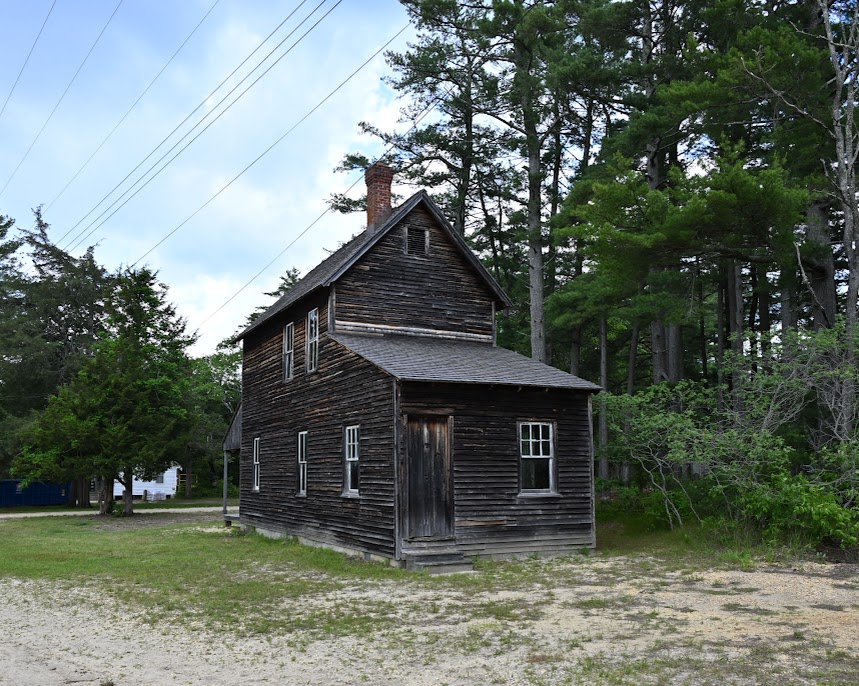
Garage and Machine Shop
Today, this is used for park operations but previously was the home for the blacksmith and repair shop for the sawmill and cranberry operations.
Cranberry Sorting and Packing House
Cranberries were sorted here according to size and quality. They were then packed to be sold at the market.
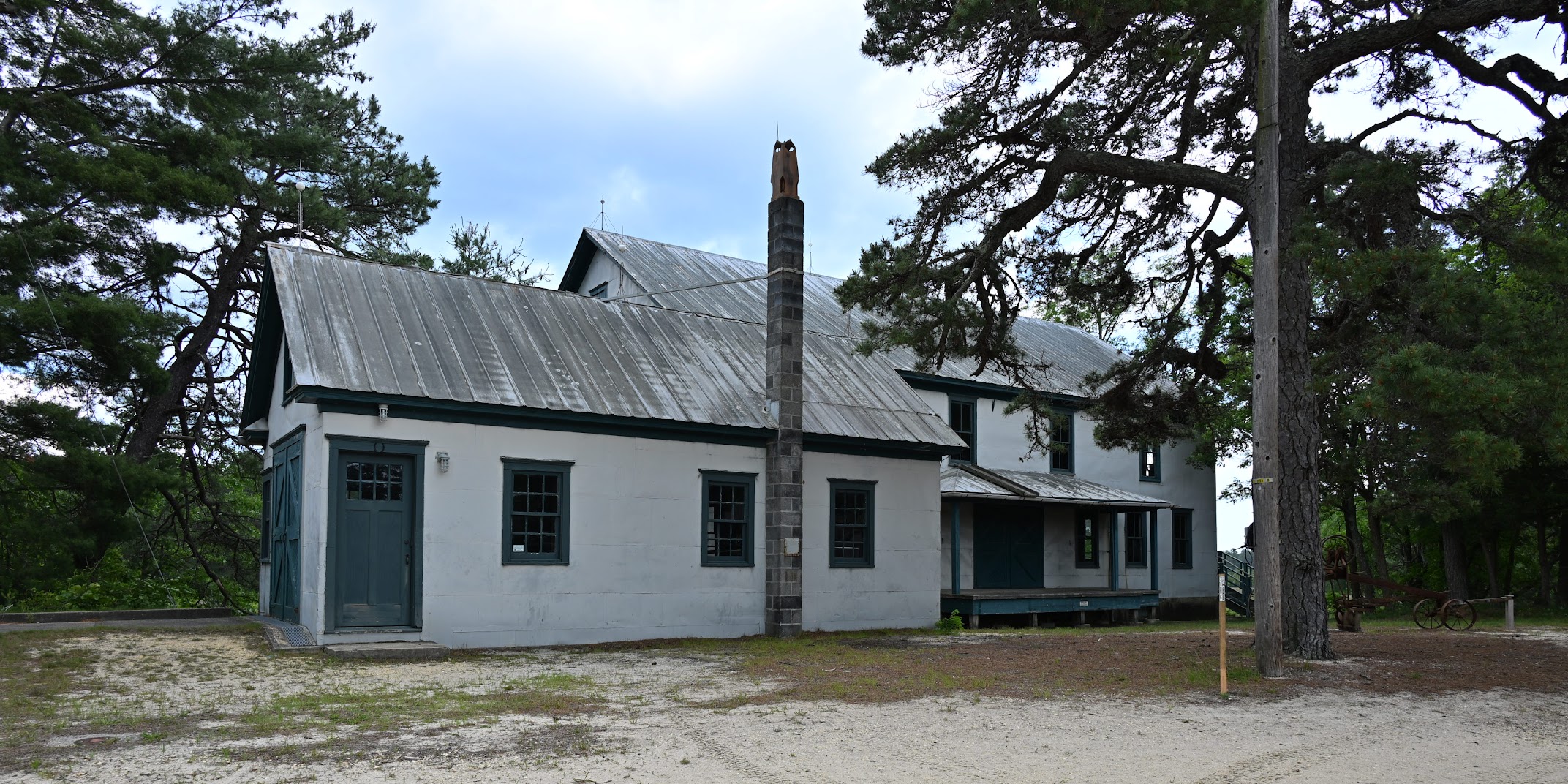
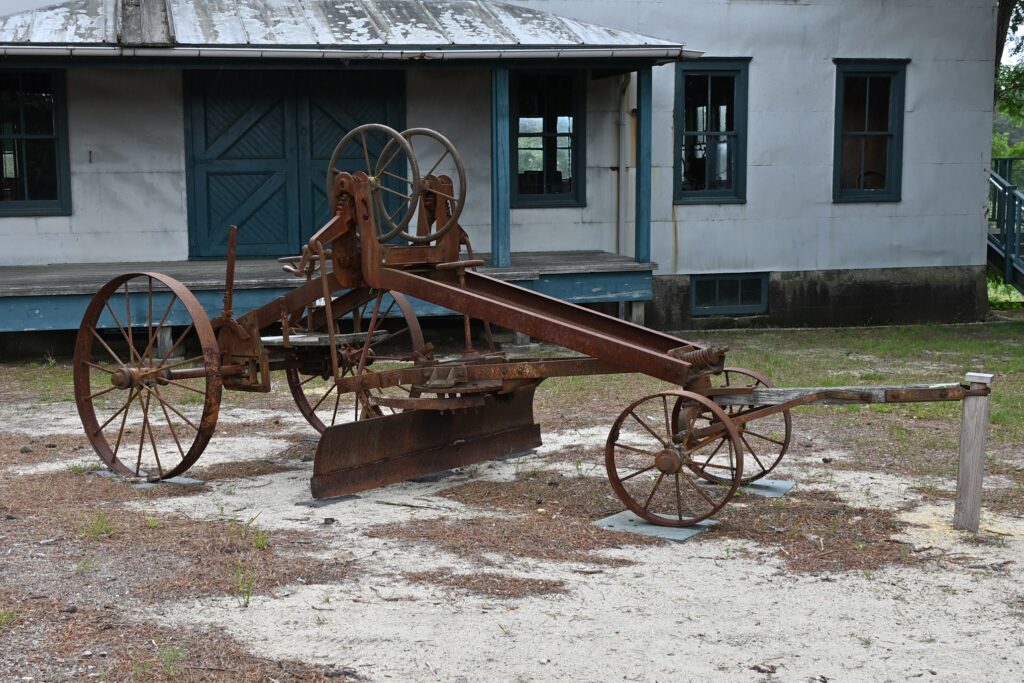
General Store
Items such as oatmeal, flour, pork, canned salmon and sardines and sugar were sold here to the villagers.

Shower Room and Bunk House
The shower room had separate men’s and women’s rooms with two shower stalls in each. There was also a laundry sink in the women’s room.
The bunk house was home to the single workers during the cranberry harvest. This building has been standing since the days when the land was used for lumber.
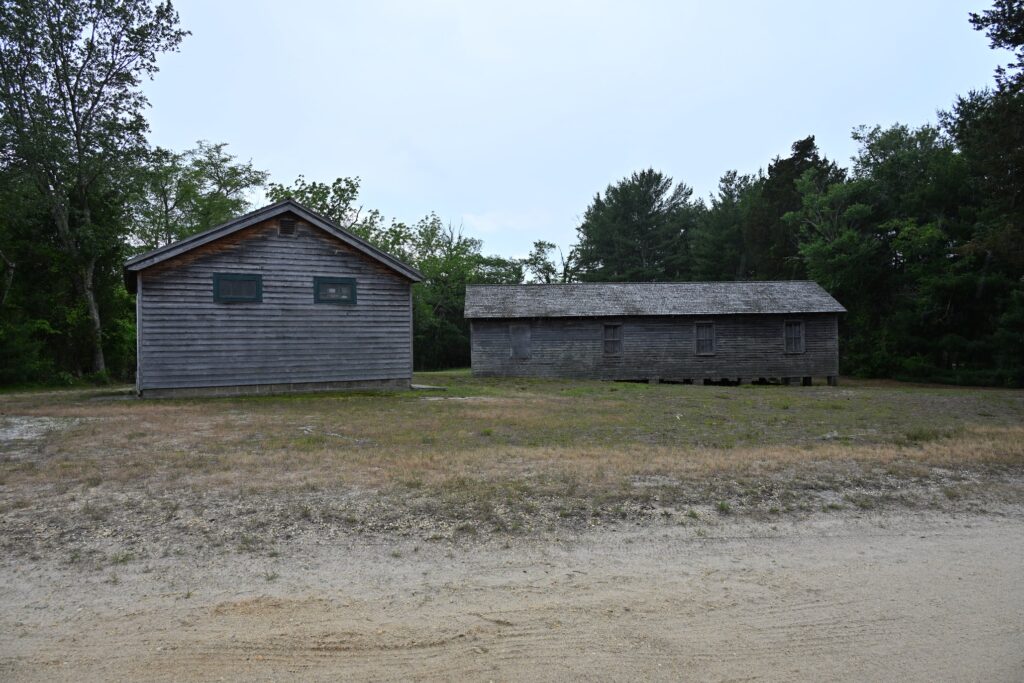
Jumper Building
Where the wet cranberries were dried and sorted and was also used to store farm equipment.
Sawmill
Lumber that was used for products that were either sold or used in the village was produced here.
Harvest Foreman’s House
This was the seasonal home of the workers’s foreman.
Picker’s Cottages
Each cottage was the home for two families during the harvest season, which lasted from Labor Day to Thanksgiving. They would typically be picking the cranberries in the bogs.
Company Foreman’s House
The home to the head foreman who oversaw the management of the cranberry and sawmill operations.
Hiking
Double Trouble has eight miles of trails that can be used for hiking, mountain biking and horseback riding. As usual, we spent the day hiking.
There’s one main parking lot right at the entrance to the park where you can access both the Village and hiking trails from. We followed the below AllTrails route for a total of about 5.5 miles. My watch died before the end so I don’t have the exact mileage but it was close to the amount listed in the description.
Mill Pond Trail (Red)
We started with the Mill Pond Trail which takes you to the Cedar Creek Reservoir from the Village. The majority of the trails in the park are sandy and very flat so they make for a nice leisurely stroll. It was mostly overcast when we were on this trail, but on a sunny day, there would be a lot of direct sunlight as the trail isn’t fully covered.

On this trail, we also learned the important role fire has played in the creation of the Pine Barrens. Controlled fires are used to clear out the fallen pine needles, twigs and branches. All of these create an acidic environment that oak seeds thrive in. Basically, without the fires, it’s highly likely Oak Trees would have grown instead of Pine Trees.
Eventually you’ll get to the reservoir before starting the loop back towards the village.

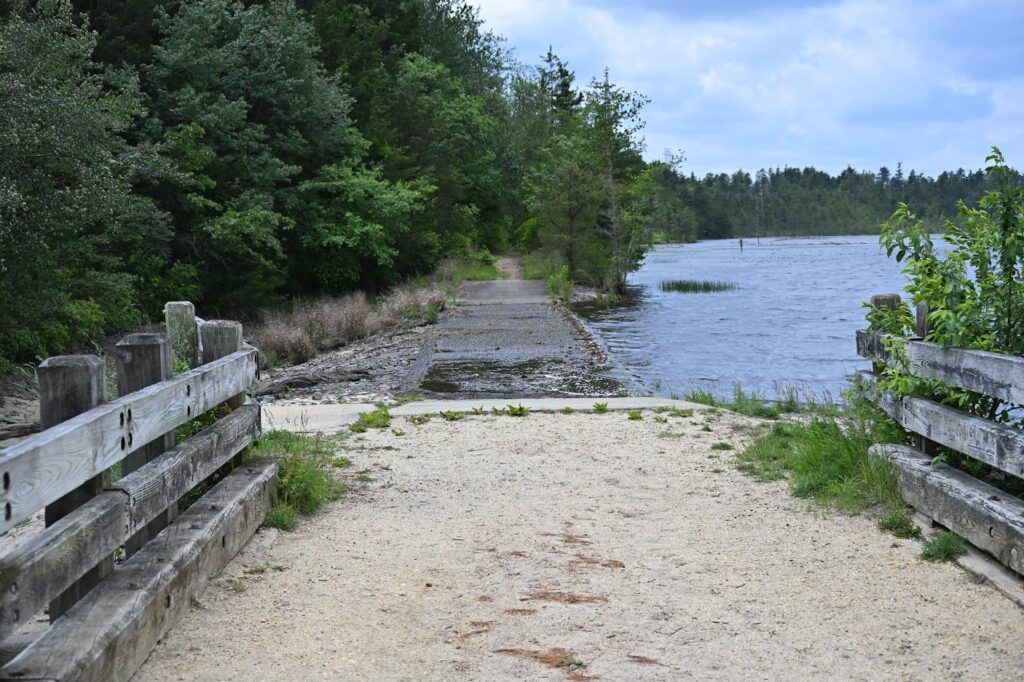
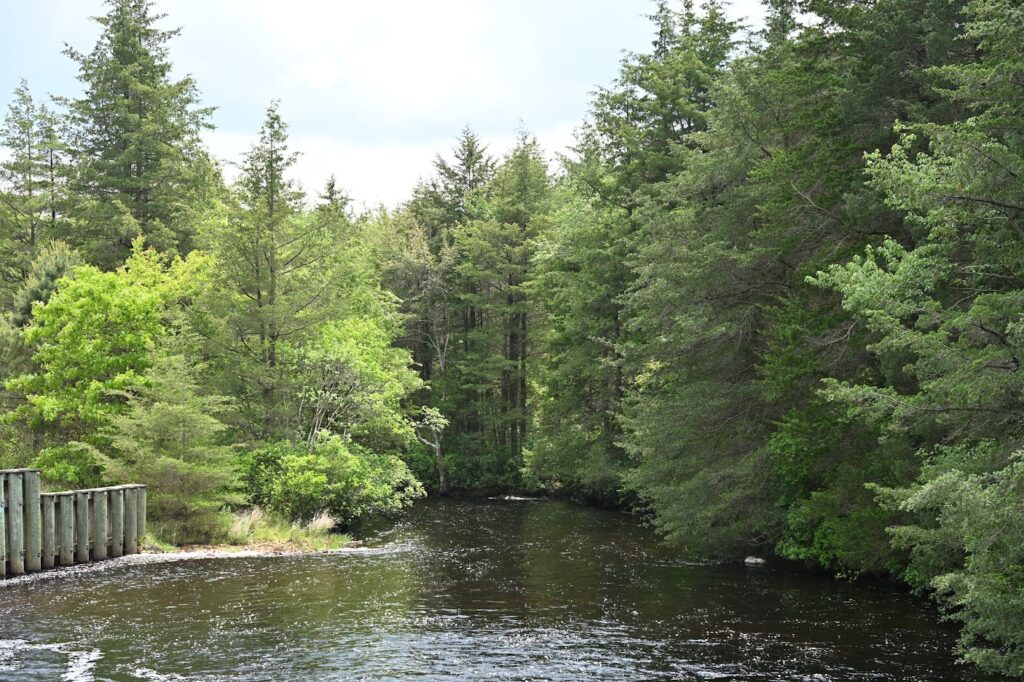
When you loop back, you can either head back to the parking lot or continue on to the Nature Trail (Green)/Sweetwater Trail (Orange).
Nature Trail (Green)/Sweetwater Trail (Orange)
These two are actually the longest trails in the park and for a small portion, are combined as one. The Nature Trail is 1.9 miles in total and the Sweetwater Trail is 2.5 mies. Cedar Creek is running alongside the trail for a small part and if you look closely, you’ll likely see some turtles relaxing on a log taking in the sun.
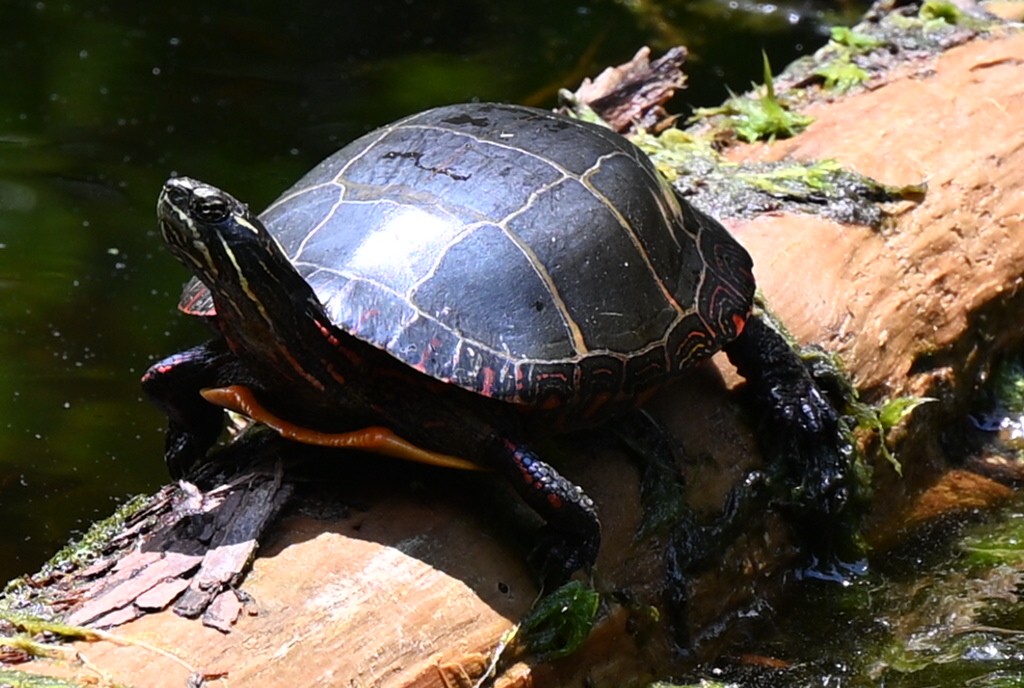
You’ll then pass by a white bridge crossing over Cedar Creek. Here you’ll find access to the water below for canoeing/kayaking.
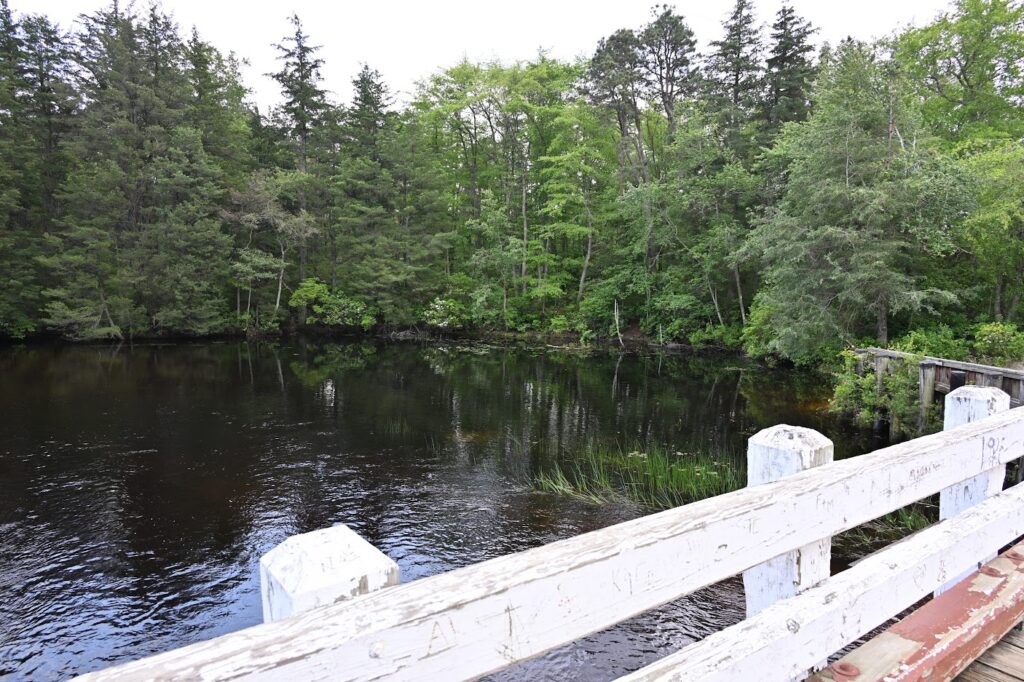
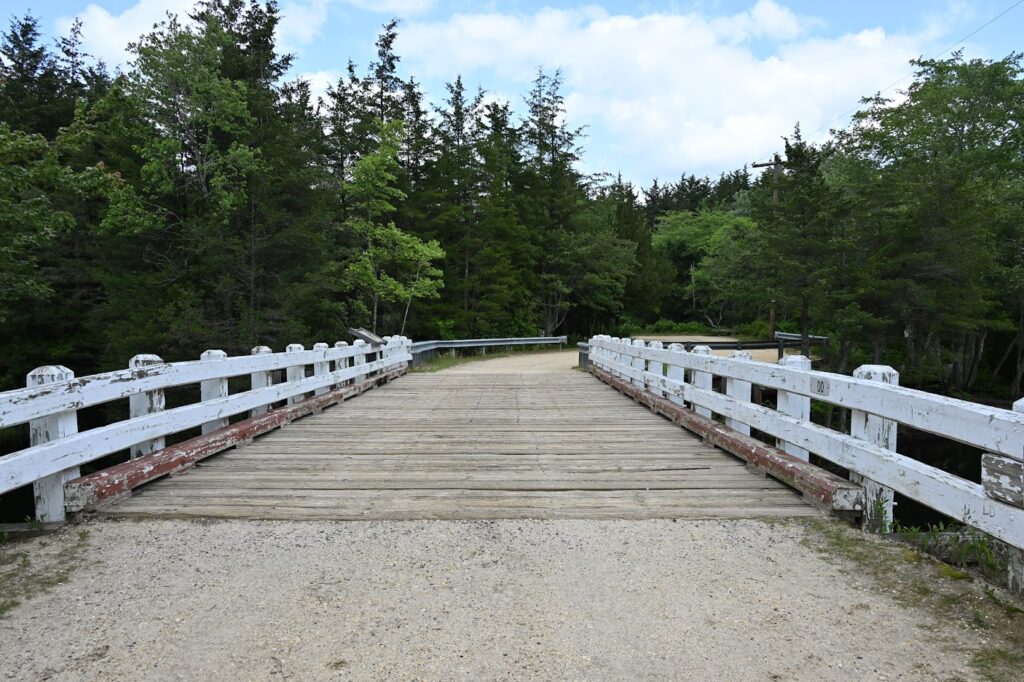
These two trails eventually split into their own directions. They both loop back to the parking lot, just in different ways to get there. Assuming you stay on the orange trail, you’ll also have the option to loop the Swordens Pond Trail (more on that next) before completing the rest of the orange. For the rest of the orange trail, about half of it is in direct sunlight near the Sweetwater Reservoir and the rest is covered by trees, but runs next to the Parkway. Unfortunately, it gets pretty loud at this point, so it doesn’t feel much like being out in nature anymore.
This section before the Parkway is still a very nice area to hike with plenty of chances to spot more turtles or birds.
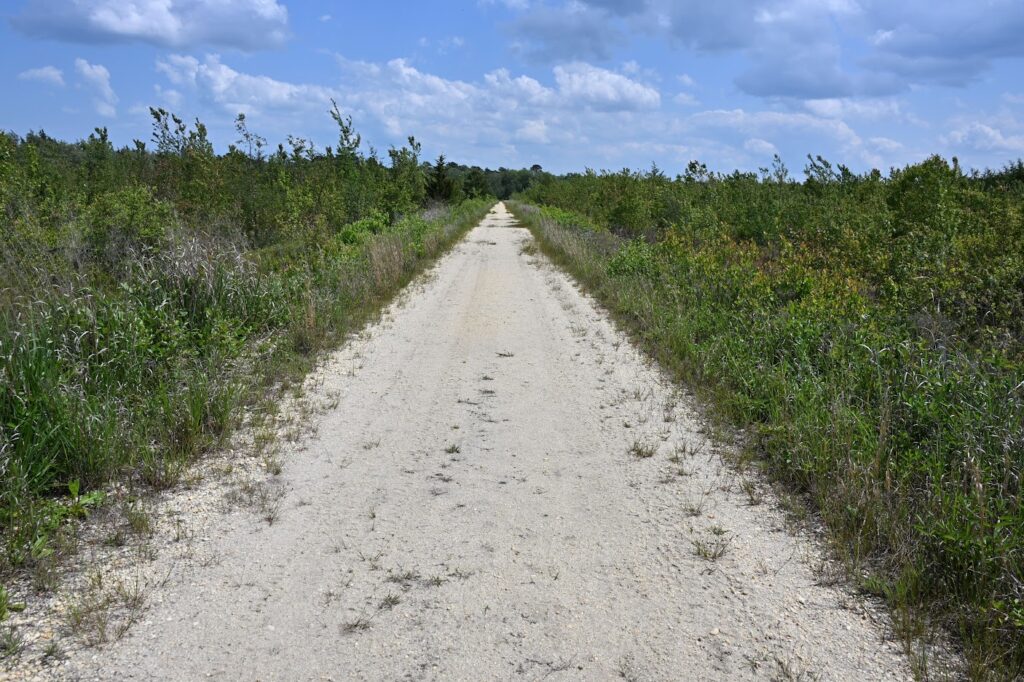

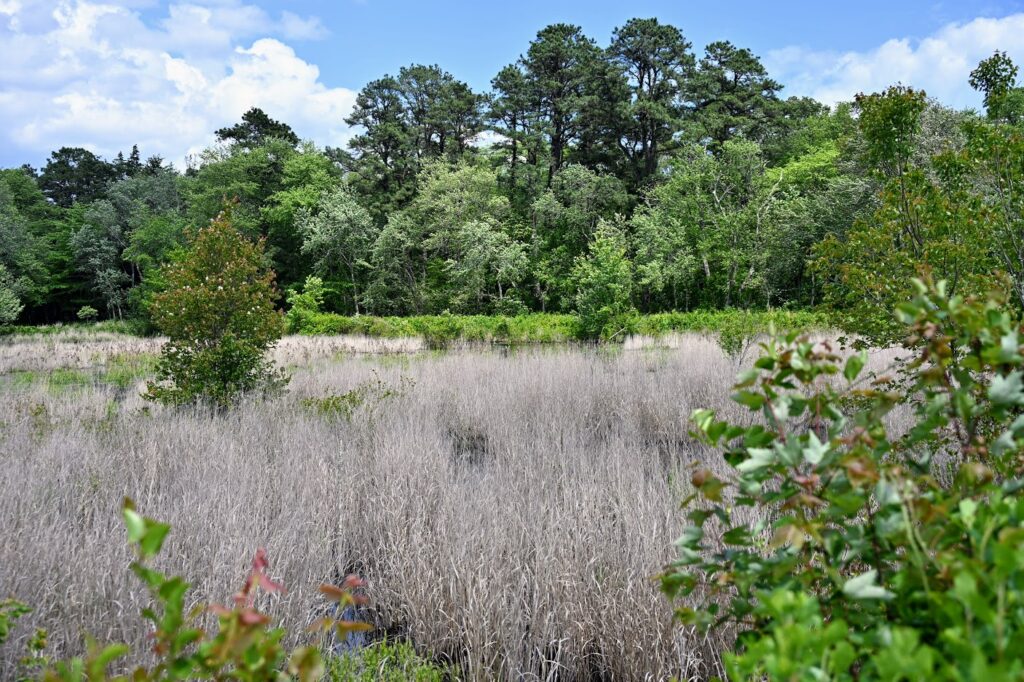
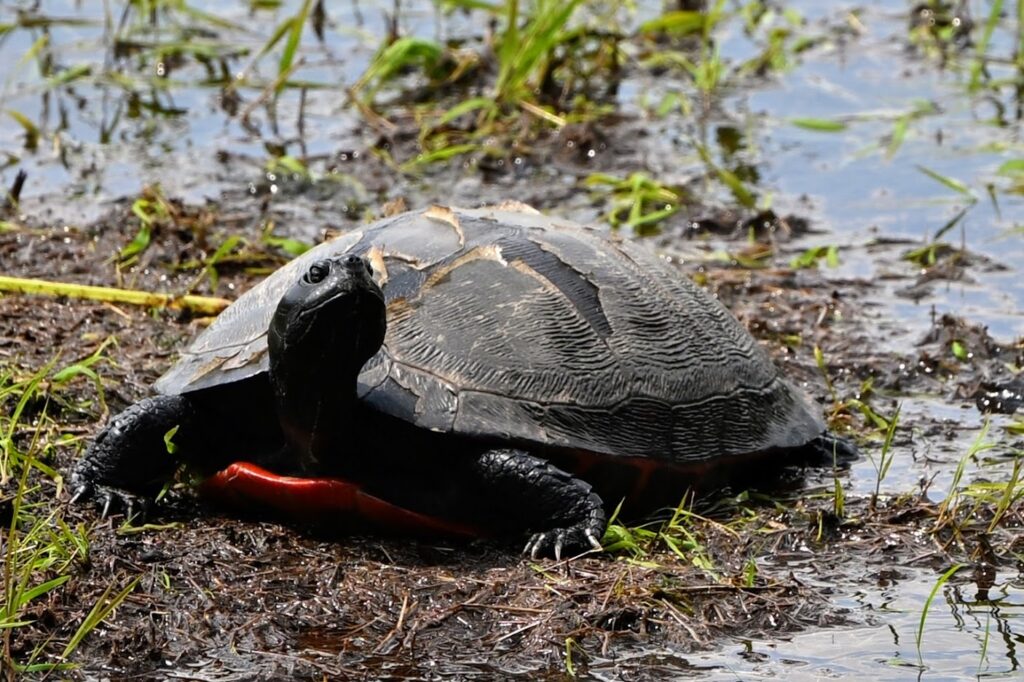
Swordens Pond Trail (Yellow)
Finally, the Swordens Pond Trail. This one is unlike any of the others in the park as it loops through the forest. A much narrower trail with less sandy soil, it sort of feels like a completely different park.
This trail is only 1.5 miles long so it’s relatively short. Along the way you’ll pass by Swordens Pond, which is described as being hidden. To be honest, we didn’t see this pond at all so I guess it’s fair to say the description is pretty accurate. Either way, this trail is a nice change of pace from the rest of the park and isn’t out of the way. It’s worth checking out if you’re up for a little bit more mileage.
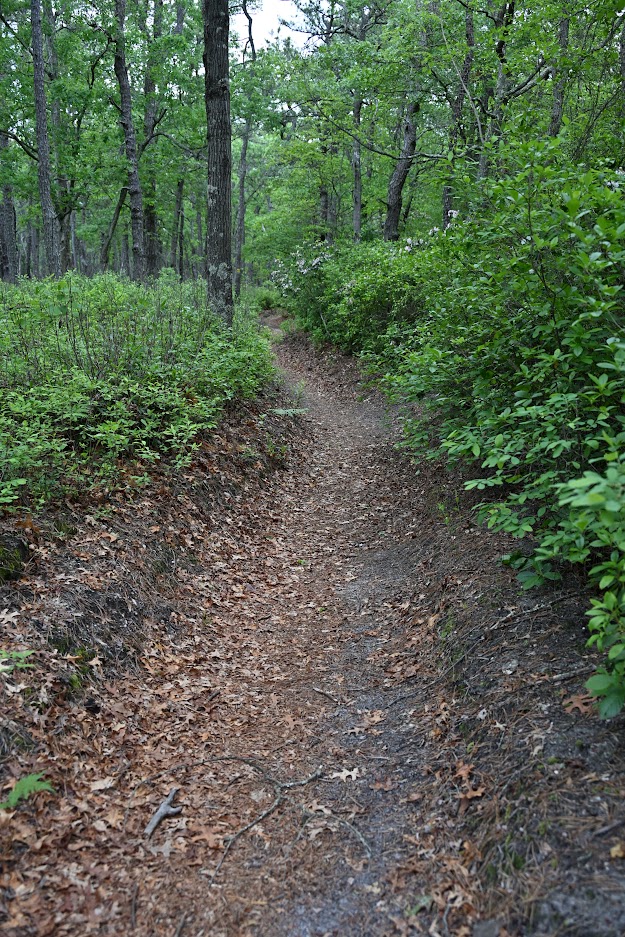
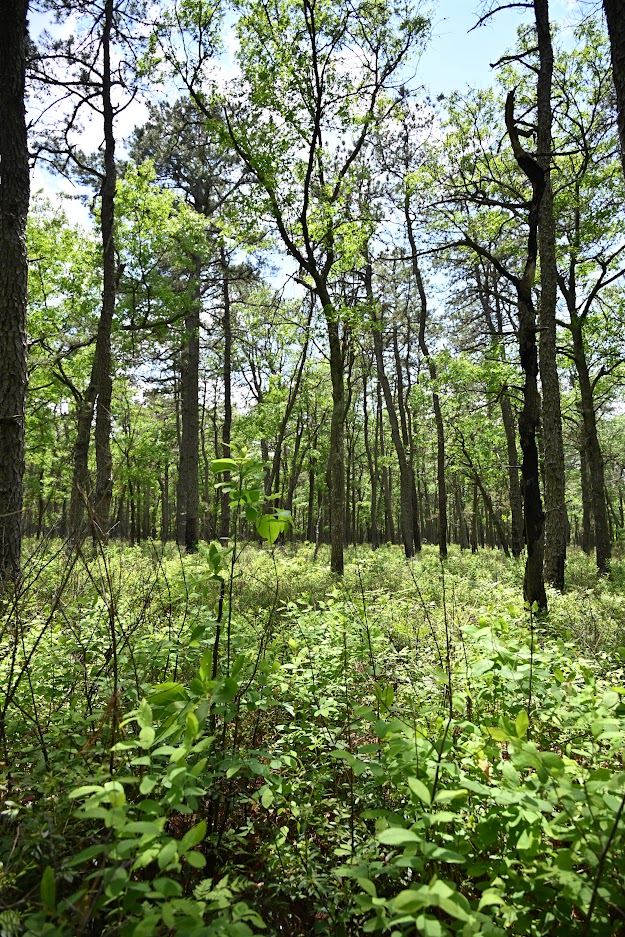
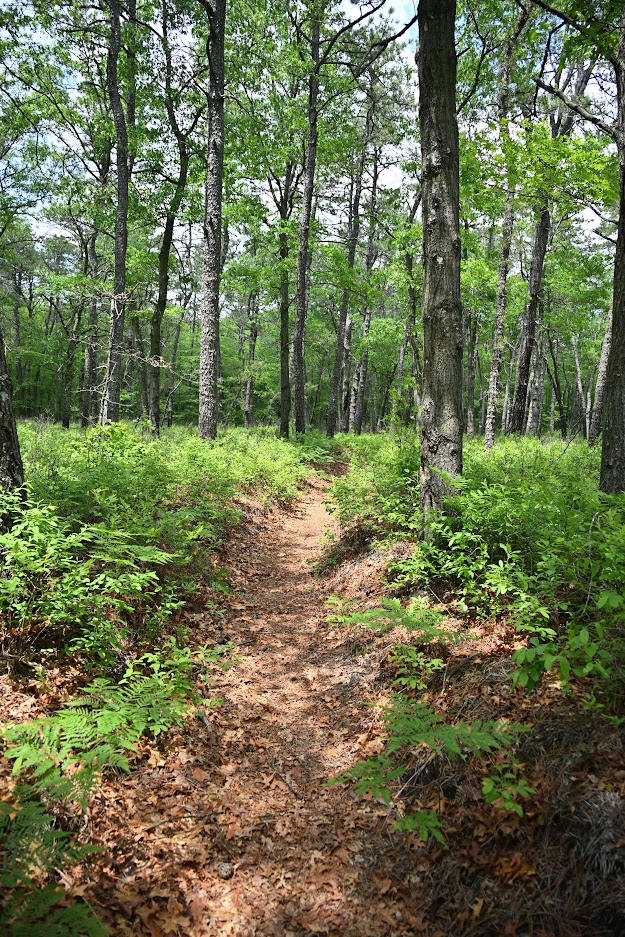
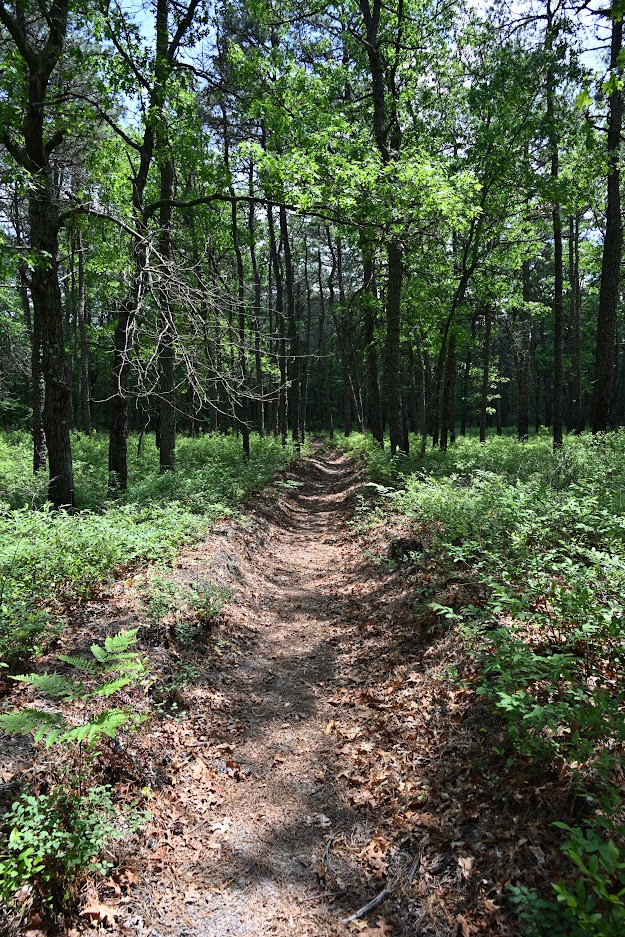
Other Activities
Besides hiking, mountain biking and horseback riding, there are plenty of other options for things to do in Double Trouble:
Canoeing and Kayaking
Until we buy a kayak, we’ll just be hiking at these parks but canoeing and kayaking is definitely an option. You’ll be cruising along Cedar Creek but make sure to stay on your canoe/kayak as swimming is not allowed. Also, there is nowhere to rent in the park so you have to bring your own.
Fishing and Hunting
Both fishing and hunting are permitted in the park but are subject to the regulations of the New Jersey Division of Fish and Wildlife.
Closing Thoughts
For a quick introduction to the NJ Pine Barrens, Double Trouble is a great start. It’s perfect for a half day or less and getting the chance to learn about the lumber and cranberry industries was pretty interesting. I’m thinking this would be a nice park to go trail running at or take our dog to when we have one!
